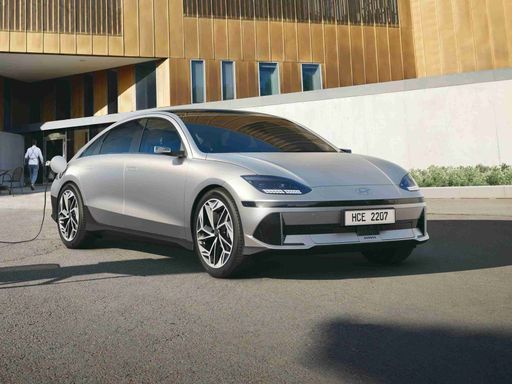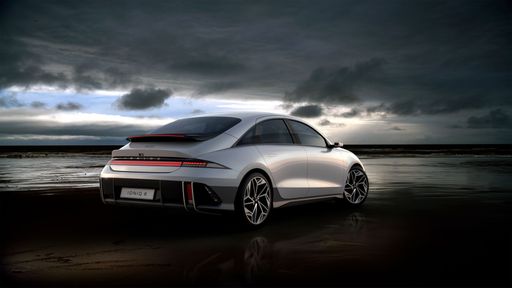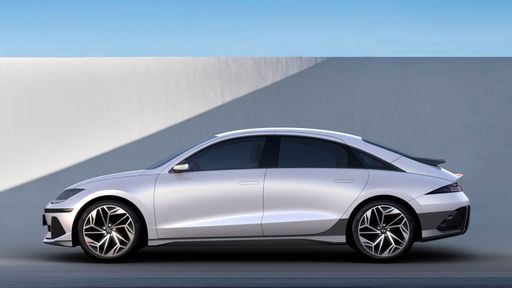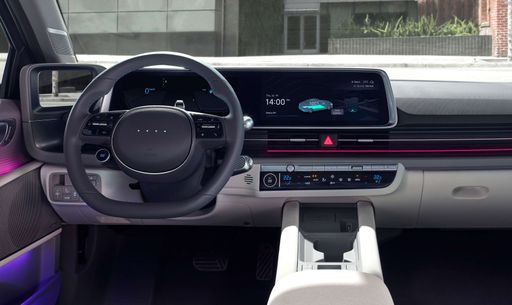Alfa Romeo Junior vs Hyundai IONIQ 6 – Which one offers the better deal?
Two cars, one duel: Alfa Romeo Junior meets Hyundai IONIQ 6.
Which one wins in performance, efficiency and value for money? Find out now!
Costs and Efficiency:
Looking at overall running costs, both models reveal some interesting differences in everyday economy.
Alfa Romeo Junior has a decisively advantage in terms of price – it starts at 25700 £, while the Hyundai IONIQ 6 costs 37600 £. That’s a price difference of around 11957 £.
In terms of energy consumption, the advantage goes to the Hyundai IONIQ 6: with 13.90 kWh per 100 km, it’s slight more efficient than the Alfa Romeo Junior with 15.10 kWh. That’s a difference of about 1.20 kWh.
As for range, the Hyundai IONIQ 6 performs evident better – achieving up to 614 km, about 204 km more than the Alfa Romeo Junior.
Engine and Performance:
Under the bonnet, it becomes clear which model is tuned for sportiness and which one takes the lead when you hit the accelerator.
When it comes to engine power, the Hyundai IONIQ 6 has a clearly edge – offering 650 HP compared to 280 HP. That’s roughly 370 HP more horsepower.
In acceleration from 0 to 100 km/h, the Hyundai IONIQ 6 is convincingly quicker – completing the sprint in 3.20 s, while the Alfa Romeo Junior takes 5.90 s. That’s about 2.70 s faster.
In terms of top speed, the Hyundai IONIQ 6 performs to a small extent better – reaching 257 km/h, while the Alfa Romeo Junior tops out at 206 km/h. The difference is around 51 km/h.
There’s also a difference in torque: Hyundai IONIQ 6 pulls clearly stronger with 770 Nm compared to 345 Nm. That’s about 425 Nm difference.
Space and Everyday Use:
Beyond pure performance, interior space and usability matter most in daily life. This is where you see which car is more practical and versatile.
Both vehicles offer seating for 5 people.
In curb weight, Alfa Romeo Junior is distinct lighter – 1380 kg compared to 1850 kg. The difference is around 470 kg.
In terms of boot space, the Alfa Romeo Junior offers slight more room – 415 L compared to 401 L. That’s a difference of about 14 L.
When it comes to payload, Hyundai IONIQ 6 slight takes the win – 430 kg compared to 420 kg. That’s a difference of about 10 kg.
Who wins the race?
The Hyundai IONIQ 6 proves to be outperforms in nearly all aspects and therefore becomes our DriveDuel Champion!
Hyundai IONIQ 6 is the better all-rounder in this comparison.
 @ Hyundai Motor Company
@ Hyundai Motor Company
Hyundai IONIQ 6
Alfa Romeo Junior
The Alfa Romeo Junior captures the essence of Italian design with its sleek lines and compact dimensions, making it an icon of elegance and performance. With a spirited driving experience and a charming retro aesthetic, it appeals to enthusiasts and casual drivers alike. This delightful car embodies the brand's rich heritage while remaining a fun and engaging option for those seeking a unique automotive experience.
details @ Alfa Romeo / Stellantis Media
@ Alfa Romeo / Stellantis Media
 @ Alfa Romeo / Stellantis Media
@ Alfa Romeo / Stellantis Media
 @ Alfa Romeo / Stellantis Media
@ Alfa Romeo / Stellantis Media
Hyundai IONIQ 6
The Hyundai IONIQ 6 merges futuristic design with eco-friendly technology, offering a glimpse into the future of electric mobility. Its sleek silhouette and aerodynamic profile are sure to capture attention on the road, while the interior provides a seamless blend of comfort and cutting-edge digital features. With a focus on efficiency and sustainability, this model represents a significant step forward in the evolution of electric vehicles.
details @ Hyundai Motor Company
@ Hyundai Motor Company
 @ Hyundai Motor Company
@ Hyundai Motor Company
 @ Hyundai Motor Company
@ Hyundai Motor Company
 @ Hyundai Motor Company
@ Hyundai Motor Company
 @ Alfa Romeo / Stellantis Media
@ Alfa Romeo / Stellantis Media
|
 @ Hyundai Motor Company
@ Hyundai Motor Company
|
|
|
|
Costs and Consumption |
|
|---|---|
|
Price
25700 - 41600 £
|
Price
37600 - 64300 £
|
|
Consumption L/100km
4.8 - 5.4 L
|
Consumption L/100km
-
|
|
Consumption kWh/100km
15.1 - 17.5 kWh
|
Consumption kWh/100km
13.9 - 15.1 kWh
|
|
Electric Range
344 - 410 km
|
Electric Range
429 - 614 km
|
|
Battery Capacity
0.4 - 51 kWh
|
Battery Capacity
53 - 84 kWh
|
|
co2
0 - 119 g/km
|
co2
0 g/km
|
|
Fuel tank capacity
44 - 45 L
|
Fuel tank capacity
-
|
Dimensions and Body |
|
|---|---|
|
Body Type
SUV
|
Body Type
Hatchback
|
|
Seats
5
|
Seats
5
|
|
Doors
5
|
Doors
4
|
|
Curb weight
1380 - 1689 kg
|
Curb weight
1850 - 2095 kg
|
|
Trunk capacity
340 - 415 L
|
Trunk capacity
401 L
|
|
Length
4173 mm
|
Length
4855 - 4935 mm
|
|
Width
1781 mm
|
Width
1880 - 1940 mm
|
|
Height
1505 - 1538 mm
|
Height
1495 mm
|
|
Max trunk capacity
1205 - 1280 L
|
Max trunk capacity
-
|
|
Payload
390 - 420 kg
|
Payload
425 - 430 kg
|
Engine and Performance |
|
|---|---|
|
Engine Type
Electric, Petrol MHEV
|
Engine Type
Electric
|
|
Transmission
Automatic
|
Transmission
Automatic
|
|
Transmission Detail
Dual-Clutch Automatic, Reduction Gearbox
|
Transmission Detail
Reduction Gearbox
|
|
Drive Type
Front-Wheel Drive, All-Wheel Drive
|
Drive Type
Rear-Wheel Drive, All-Wheel Drive
|
|
Power HP
136 - 280 HP
|
Power HP
151 - 650 HP
|
|
Acceleration 0-100km/h
5.9 - 9.1 s
|
Acceleration 0-100km/h
3.2 - 8.8 s
|
|
Max Speed
150 - 206 km/h
|
Max Speed
185 - 257 km/h
|
|
Torque
230 - 345 Nm
|
Torque
350 - 770 Nm
|
|
Number of Cylinders
3
|
Number of Cylinders
-
|
|
Power kW
100 - 207 kW
|
Power kW
111 - 478 kW
|
|
Engine capacity
1199 cm3
|
Engine capacity
-
|
General |
|
|---|---|
|
Model Year
2024 - 2025
|
Model Year
2022 - 2025
|
|
CO2 Efficiency Class
A, C, D
|
CO2 Efficiency Class
A
|
|
Brand
Alfa Romeo
|
Brand
Hyundai
|
What drive types are available for the Alfa Romeo Junior?
Available configurations include Front-Wheel Drive or All-Wheel Drive.
The prices and data displayed are estimates based on German list prices and may vary by country. This information is not legally binding.
